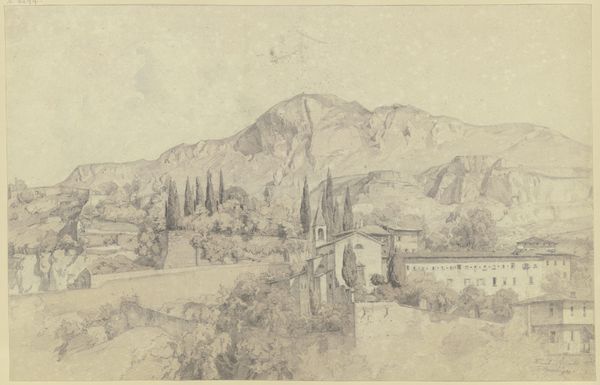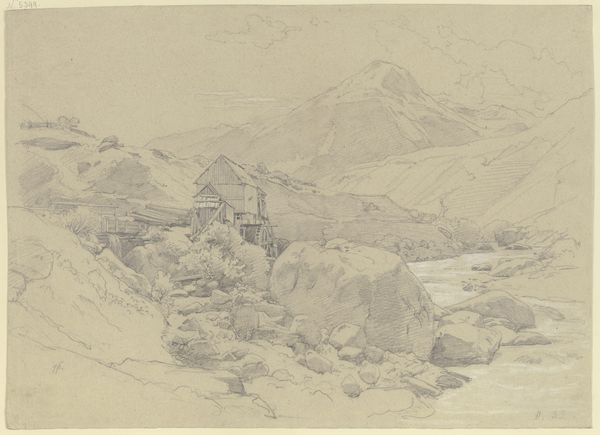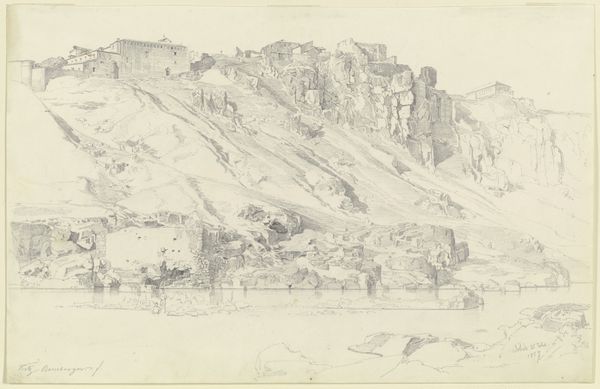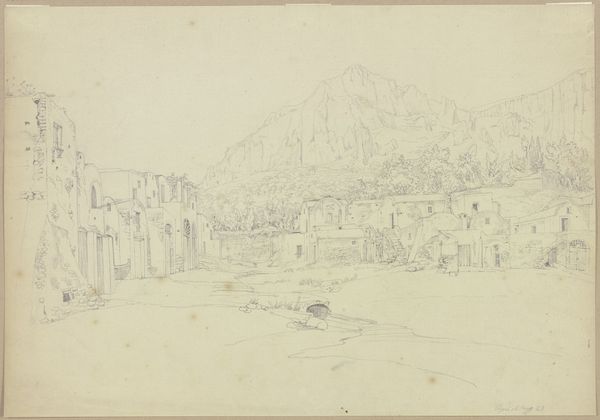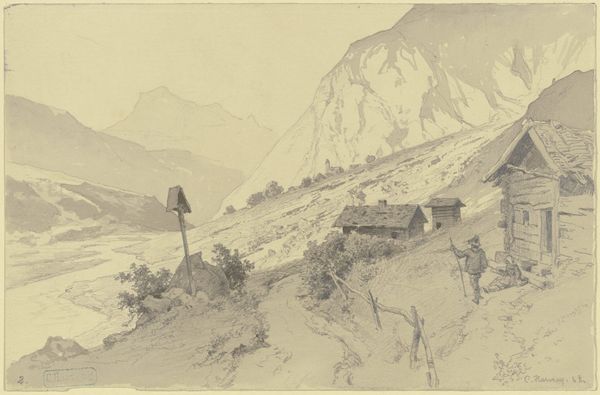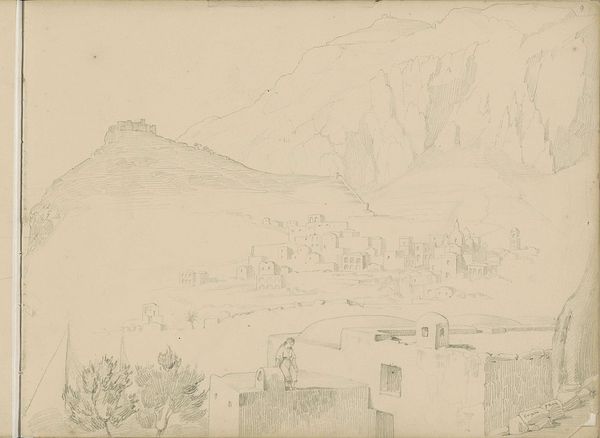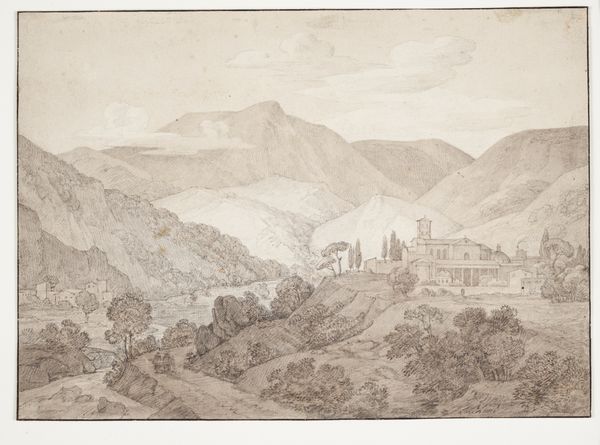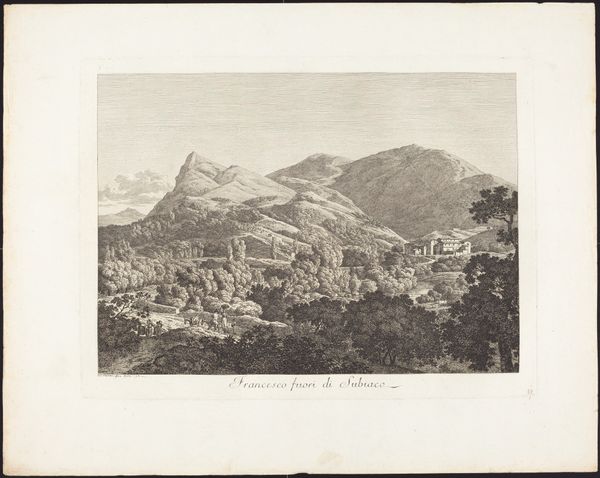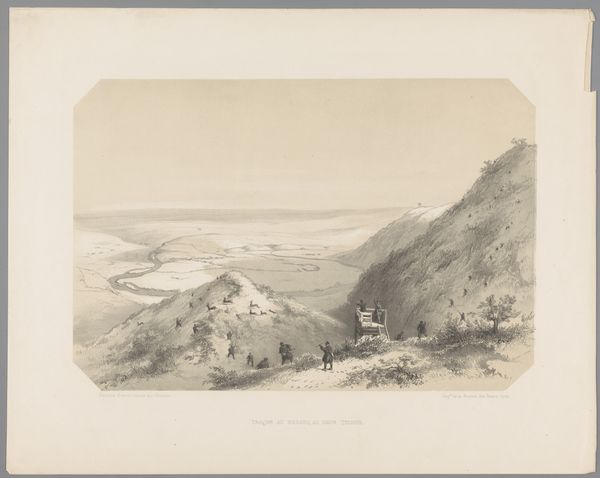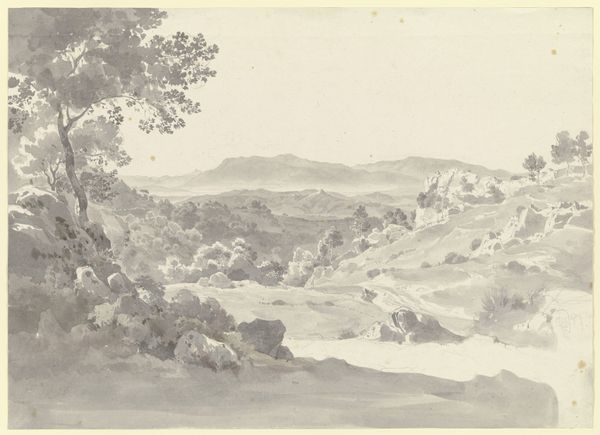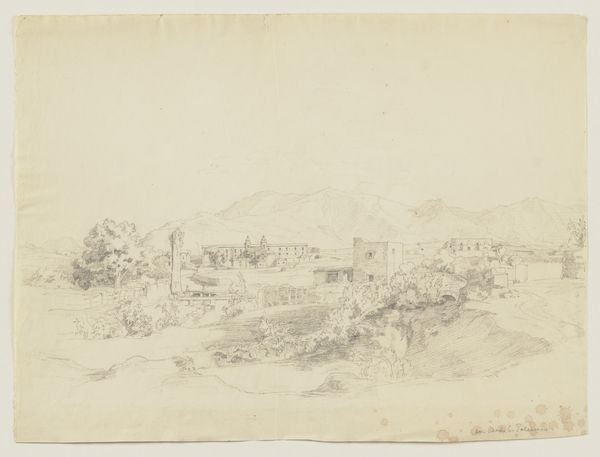
Copyright: Public Domain
Editor: This is Ernst Fries’s "Ansicht von Massa di Carrara," created in 1825, using graphite, pen, and ink. The mountains looming over the small town nestled amongst trees give it a rather sublime and majestic feel. What symbolic meaning do you find within this particular landscape? Curator: Look at how the artist employs the valley. In Romanticism, the valley can represent a sacred passage, a liminal space between the known and the unknown, the mundane and the spiritual. How might that symbolic valley interact with the mountains towering above? Editor: Perhaps the mountains represent stability and the sublime, contrasting with the unpredictable nature of earthly life, as depicted by the little dwellings? Curator: Precisely. Consider the light too, the way it drapes itself. Think of the light as representing enlightenment, both intellectual and spiritual, permeating the valley. How might Fries be implying that Carrara, situated in this particular valley, holds some kind of unique or specific illumination? Editor: Well, Carrara is known for its marble. Marble has historically been associated with purity, permanence, and even divinity. The light could therefore represent Carrara’s symbolic role as a place of artistic and perhaps spiritual importance. Curator: Indeed! Fries might also be suggesting that art, like the light filtering through the mountains, has the power to elevate and transform the mundane into the sublime. Editor: So, the cultural memory of Carrara as a source of exquisite marble adds another layer to this landscape's meaning. Thank you! I would have completely missed that on my own. Curator: It's remarkable how the combination of simple graphite and ink, shaped by historical and cultural understanding, enriches the drawing beyond its literal representation.
Comments
No comments
Be the first to comment and join the conversation on the ultimate creative platform.
